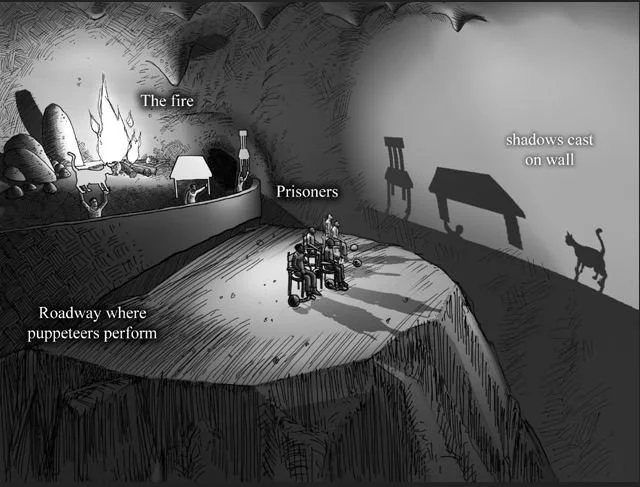Same Storm, Different Boats: Why Couples Fight and how to reconnect
When couples argue, what typically happens is that one or both people say or think there is something wrong with the other. Now, there could be something clinically wrong—but that’s not what this blog is about. We often make things deeper than they need to be. Most arguments begin with a misunderstanding that spirals into more misunderstandings, eventually resulting in a conversation that leaves your boats storm-damaged. If this communication style continues, then the “storm-damaged conversation” becomes a shipwreck.
Feeling stuck in a storm is hard. But even in that, you still have a few options: jump and take your chances in the open sea (during a storm!), or use your Storm Protocol.
In arguments and breakups, a common phrase is:
“I just need some space.”
They’re right. The Storm Protocol is SPACE:
Start Small
Pause
Alleviate
Check-In
Evaluate
(They are not in sequential order. Use each concept as needed.)
1. START SMALL: THERE IS ALWAYS COMMON GROUND
“But we can’t find any common ground... they don’t understand where I’m coming from.”
The ironic paradox is: you do have common ground—by not having common ground. Just like the title “Same storm, different boats,” there’s commonality within the argument. In fact, I’d change the metaphor slightly: it’s the same storm, same boat, but you’re in different parts of the boat.
In arguments, the usual mindset is me vs. you. That becomes a problem when your partner turns into an opponent to defeat—causing more separation. Instead, try shifting to us vs. the storm. This creates a spirit of collaboration and opens the door to co-create a better understanding of both the issue and each other. A ship’s captain can’t navigate a storm alone. That’s why they have a crew. So, use yours.
Start small. Chances are, neither of you wants to fight. You both want to get through it and find peace. Use that. Start building with each other’s hearts and strengths.
2. PAUSE: STOP WHAT YOU’RE DOING
“We’re both really passionate (angry) about the sides we’re on.”
In a storm, it’s wise to avoid metal or electrical devices to reduce the risk of lightning strikes. The same principle applies to arguments. Emotionally charged conversations are one of the main reasons conflicts escalate and remain unresolved. Emotions aren’t inherently bad—they’re powerful guides that signal when something is wrong. However, they’re not always reliable when it comes to explaining why something feels wrong.
When we’re engulfed in strong emotions like sadness, anger, or withdrawal, our perspective narrows. Tunnel vision sets in, and we tend to only see our own side of the story. That’s why it’s crucial to shift the tone of a conversation before it becomes too charged and someone reacts impulsively.
If you feel yourself approaching a destructive path emotionally—change course. Do something different, ideally the opposite of what your emotions are pushing you toward. This intentional shift can help you listen more effectively and move toward common ground.
3. ALLEVIATE: TAKE THE PRESSURE OFF
Does this need to be solved right now?
In this exact moment—this very second—does this need to be resolved? Is someone going to get hurt if it isn’t?
Here’s some more boat safety tips from “Captain Google”: slowing the boat during a storm promotes safety and control. Rushing to solve an argument can spike anxiety, increase emotional loss of control, and heighten the risk of misunderstanding.
Slow the pace. Speak more calmly, gently, and with compassion. This creates a safer emotional space.
Also—sometimes it’s okay to throw things overboard in a sinking ship. Ask: “Am I holding on to something that doesn’t need to be here?” Maybe it’s the idea that everything must be solved immediately. If it's not essential, let it go. That’s not avoidance—it’s like idling the boat during the eye of the storm to gather your bearings.
4. CHECK-IN: WHERE ARE YOU? WHERE IS YOUR PARTNER?
“Is this what you meant? Am I understanding this correctly?”
In a storm, the safety of everyone on the boat matters. Clear, intentional communication strengthens the safety plan. Active listening is crucial—summarize what you heard, and ask if you understood correctly, using a curious, nonjudgmental tone. This tells your partner you’re listening, trying to understand, and that you care.
A great moment from Ted Lasso is the dart scene, where Ted quotes Walt Whitman: “Be curious, not judgmental” (Lawrence et al., 2020). That applies beautifully to relationships. Judgment often comes from assumptions. Curiosity dissolves them.
Also, check what room you and your partner are in. You might be in logic mode while they’re in emotional mode. Neither is wrong. They’re just different. Different is good. Different is what helps you grow—so embrace it.
Watch the dart scene (note: contains strong language)
5. EVALUATE: HOW SATISFIED ARE WE?
Sometimes, one person concedes and shuts down to end the argument. That’s like jumping out of the boat to avoid the storm—but now they’re cold, wet, and still in the storm. We all do it.
If this happens, someone needs to throw a life jacket. Evaluation is that life jacket. After every argument, take time to assess: How are we feeling? Did we feel heard? What could we do better next time? Do we like this decision.
Final Thoughts
Just like storms, arguments are unpredictable. You can’t plan them perfectly—but you can prepare. And there’s beauty in the unpredictability. You may not end up where you wanted to go, but chances are, you’ll arrive where you needed to be.
Give yourself—and your partner—grace in the storm.
I'M NOT AN EXPERT ON BOAT SAFETY. DO NOT USE THIS TO HELP YOU AT SEA.
References
Lawrence, B., Goldstein, J., Kelly, J., & Sudeikis, J. (Creators). (2020–2023). Ted Lasso [TV series]. Apple TV+.
Behind the Initiative
5 Stories and 7 Virtues
It took a while for me to think of a name for my website. I wanted a name that would make other men feel comfortable but not something that would deter other people. Once I started to think of how many men wish to have a cave or women have she sheds to help them feel comfortable, my brain fired on all cylinders. I started to go deep into the name. Join me in what the Cave Counseling Initiative means and how I use this meaning as a therapist:
Dwarves Mining in the Cave: Strength and Courage
In many fantasy lores, the mines were filled with hardworking dwarves. Growing up with The Lord of the Rings and The Hobbit trilogies, I watched the dwarves, despite being smaller than most, march courageously into battle, and they were considered strong and mighty warriors.
We are in an everyday mental battle. As men, we are told to be strong and to run into battle courageously. However, being strong and courageous does not mean our emotions disappear; we are less of a man for expressing them, and we can’t express our emotions effectively and kindly. I would argue that expressing feelings is one of the most courageous and strong things a man can do. However, I can not carry your burden, as your therapist can help you in the mental everyday battle. I will help you polish your armor and strengthen your skills to win your mental battles effectively.
Daniel in the Lions’ Den: Hope and Confidence
Daniel was one of the highest-ranking people in Babylon and was without blame. Due to jealousy, a couple of high-ranking people in the kingdom conspired against Daniel to gain his status. Their conspiracy resulted in the King casting Daniel into the lions’ den to die. However, Daniel was saved by angels who shut the mouths of the lions, and Daniel was released the next day (The Great Adventure RSV Catholic Bible, 2018, Daniel 6).
Sometimes, life deals us a bad hand, and we can’t escape it. It seems all we can do in those times is wait it out. As a therapist, I want to help uncover hope. Although Daniel was still in the lions’ den, he was not afraid because he realized that he was safe from death and had the confidence he would be okay. As a strength-based therapist, you and I will explore and uncover techniques and moments of hope in your life to help you wait for your situation out in peace.
The Great Adventure RSV Catholic Bible (J. Cavins, Ed.; M. Healy, Ed.; A. Swafford, Ed; P. S. Williamson; 2nded.). (2018). Ascension.
Man Cave: Individuality
Each man cave has different themes to fit the man’s interests. Much like a man cave, I believe that therapy should be centered and tailored to your wants and needs and not based on my bias or other people’s influences. I want you to feel as comfortable as possible so we can discuss what you want to discuss. Sessions may look like talking about sports, anime, movies, memes, music, mixed martial arts, your religion, or your pets at one point and, in the next moment, exploring past or current emotions or making a plan to achieve your personal or business goals. There is no limit or minimum of what we can talk about.
Bear’s Den: Safety
The purpose of any den is for shelter. Sometimes, this shelter is for everyday life or to weather the storm. A bear also uses their den for hibernation. During hibernation, bears rest with their guard down, so they must have a fortified shelter for safety. I see the therapy space as a place to put your guard down, be your authentic self, rest, and rejuvenate your mental energy to go out to live your life. As your therapist, I will hold a safe space and keep the information you tell me in the den.
Plato’s Allegory of the Cave: Freedom
“The cavern has a mouth that opens to the light above, and a passage exists from this all the way down to the people.
They have lived here from infancy, with their legs and necks bound in chains. They cannot move. All they can do is stare directly forward, as the chains stop them from turning their heads around. Imagine that far above and behind them blazes a great fire. Between this fire and the captives, a low partition is erected along a path, something like puppeteers use to conceal themselves during their shows[. . .]
Look and you will also see other people carrying objects back and forth along the partition, things of every kind: images of people and animals, carved in stone and wood and other materials. Some of these other people speak, while others remain silent” (Plato, 2016).
We have obstacles that keep us chained, causing us to only see shadows of what our lives are or can become. These chains can look like anger, family or relational problems, sadness, anxiousness, shame, fear, low self-esteem, identity issues, or any other obstacle. Once you are ready, we can talk about and name what is holding you back from seeing and achieving your preferred life. This way, we can start unlocking those chains and see more of your story. However, the journey does not stop there. Further into Plato’s Allegory, the people were scared once they were unchained and saw reality. Although this unchained reality can set you free, this reality is new and may be hard or scary to navigate by yourself. However, you are not by yourself. Invite me to be your travel companion toward a better life.
Plato. (2016). The Allegory of the Cave. (S. Eyer, Ed.) Plumberstone Books.https://scholar.harvard.edu/files/seyer/files/plato_republic_514b-518d_allegory-of-the-cave.pdf.






